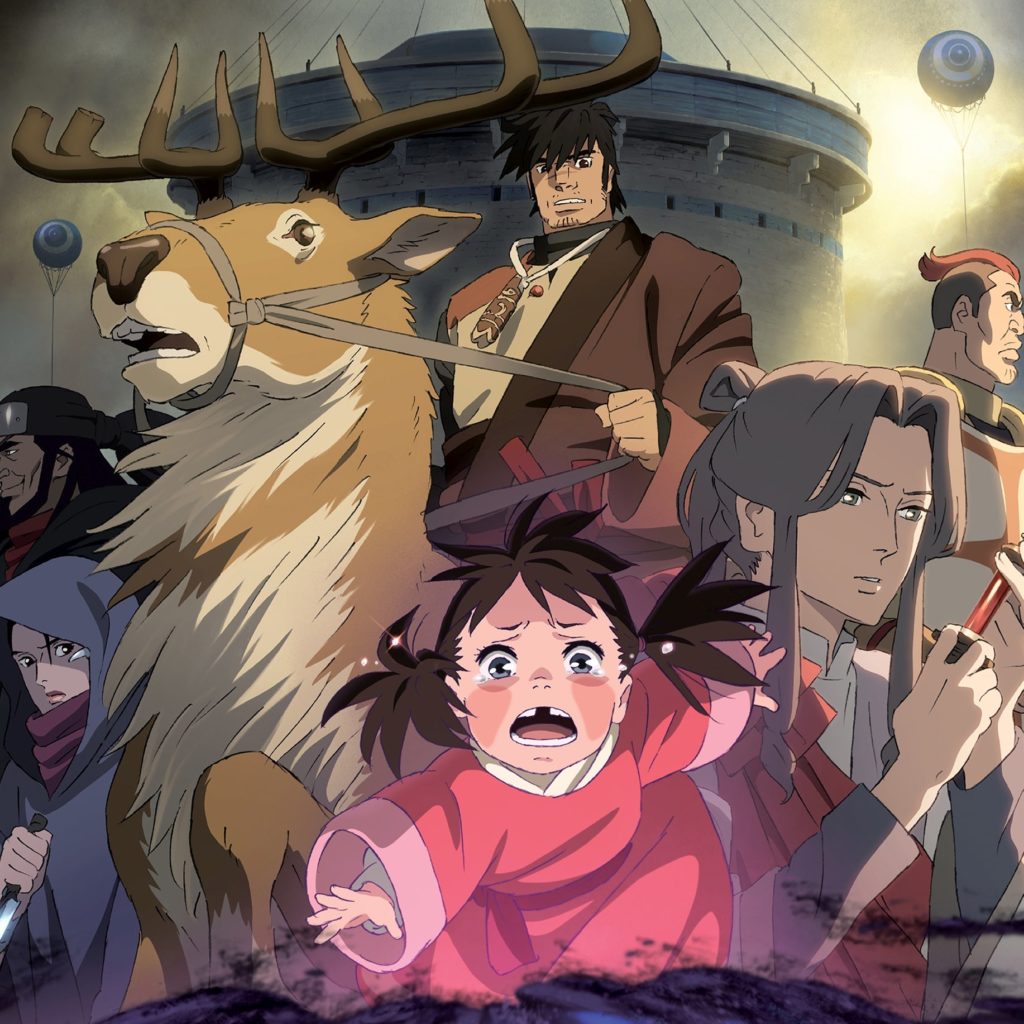The Deer King
December 10, 2022 · 0 comments
By Andrew Osmond.

Masashi Ando is co-director of The Deer King; he’s also the film’s Chief Animation Director, Character Designer and Storyboarder. Before Deer King, Ando had an astonishing career, unparalleled in the anime industry. He was Animation Director and Character Designer on Makoto Shinkai’s blockbuster Your Name, and before that on Hayao Miyazaki’s blockbuster Spirited Away. He had the same dual credits on Satoshi Kon’s Paprika, Hiroyuki Okiura’s Letter to Momo, and Hiromasa Yonebayashi’s When Marnie Was There, and took central roles on many other anime landmarks.
Among those other credits, Ando was Character Designer (with Yoshifumi Kondo) and one of the animation supervisors on Miyazaki’s medieval fantasy film, Princess Mononoke. It’s hard not to think of that when watching The Deer King, especially the scenes following Van’s sojourn among the deer herders. When his adopted daughter Yuna is stolen from him, Van sets out on desperate pursuit, accompanied by an unusual pairing – Hohsalle, who’s convinced that Van’s blood could cure the mittsual plague, and the tracker Sae, who’s uncertain of her orders to kill Van for the same reason.
As Deer King follows the characters’ journey through a splendid succession of forested landscapes, it becomes perhaps the most outdoors anime feature since Princess Mononoke more than twenty years before. The other anime film directors who’ve risen to fame in the interim, such as Shinkai and Mamoru Hosoda, sometimes set their stories in the country, but seldom with the epic sweep we see here. Ando’s characters travel through woods and gullies, ford rivers and cross mountains.

Moreover, these Deer King scenes share many elements with Mononoke, including the hero Van’s loyal and intelligent deer mount and the wolves running with humans against other humans. Even the sharp-eyed woman Sae has a screen presence much like one of Mononoke’s pivotal characters, Lady Eboshi.
More broadly, Deer King’s journey strongly evoke a classic American genre, the Western. Japanese cinema and Hollywood Westerns have mirrored each other for seventy years. Seven Samurai was remade as The Magnificent Seven and Yojimbo as A Fistful of Dollars. The latter’s star Clint Eastwood would later make the Western Unforgiven, which was transposed into a 2013 samurai film with Ken Watanabe. It’s fascinating to see such Western imagery blended so smoothly into an anime. Deer King is not a Western, but it highlights typical themes in that genre; for example, the weathered fighter who’s transformed by a child’s innocence, and the tensions between indigenous peoples and the foreigners occupying their land.
Those tensions continue to be highlighted as the film approaches its climax. On the one hand, there are fighters convinced that the invaders must be repelled, as a matter of justice and holy destiny. Yet the film stresses that reality, and human nature, is greyer than that. During the journey, the travellers see the aftermath of a local rebellion. A castle belonging to the Zol invaders is in flames, its lord and lady killed. But an old Aquafa man sits with their orphaned son, looking bleakly at the flames; he says the lord and lady were kind people, and had made the nearby village prosper.

There’s an even more pointed mini-story, told in a few seconds of screen time. In another village, the Zolians are being slaughtered by the vengeful Aquafans. But one young Aquafan woman doesn’t join in the killing; instead, she helps an Aquafan man escape up a mountain path. Presumably they are lovers, which in the other Aquafans’ eyes makes the girl a traitor. The fugitives are trapped against a cliff edge, and make a silent decision. In the next shot, the film’s main characters pass by a stormy river; caught on a tree-trunk are the lovers’ cloaks, torn and bloody.
Of course, the suggestion that human nature runs deeper than any weaponised heritage is also reflected in the story of Van and his beloved Yuna. When Sae reminds him that Yuna is not her biological daughter, Van says simply that blood ties don’t matter; human feelings are not so determined. Meanwhile, the film’s characters are divided by their views of the mittsual plague. Is it a divine judgement that wrathfully targets the Zol invaders? Or is there, as Hohsalle believes, some other reason why it kills many people but leaves others completely unharmed?
In the film, the mittsual plague is presented as “magic,” complete with a controlling shaman who lives within a giant tree like the Green Man of multiple traditions. And yet the end suggests this is only magic in the sense proposed by Arthur C. Clarke; that any sufficiently advanced technology – or by extension, advanced science – is indistinguishable from magic. In the end, it’s Hohsalle who turns out to be right, as the answer to the mittsual mystery turns out to be something the film laid out for us to see all through the story. At the same time, Van spurns the vengeful holy destiny that the shaman pushes on him, when Van realises it ignores the one thing which still makes his life meaningful: his love for Yuna.
Andrew Osmond is the author of 100 Animated Feature Films. The Deer King is released in the UK by Anime Limited.
Leave a Reply